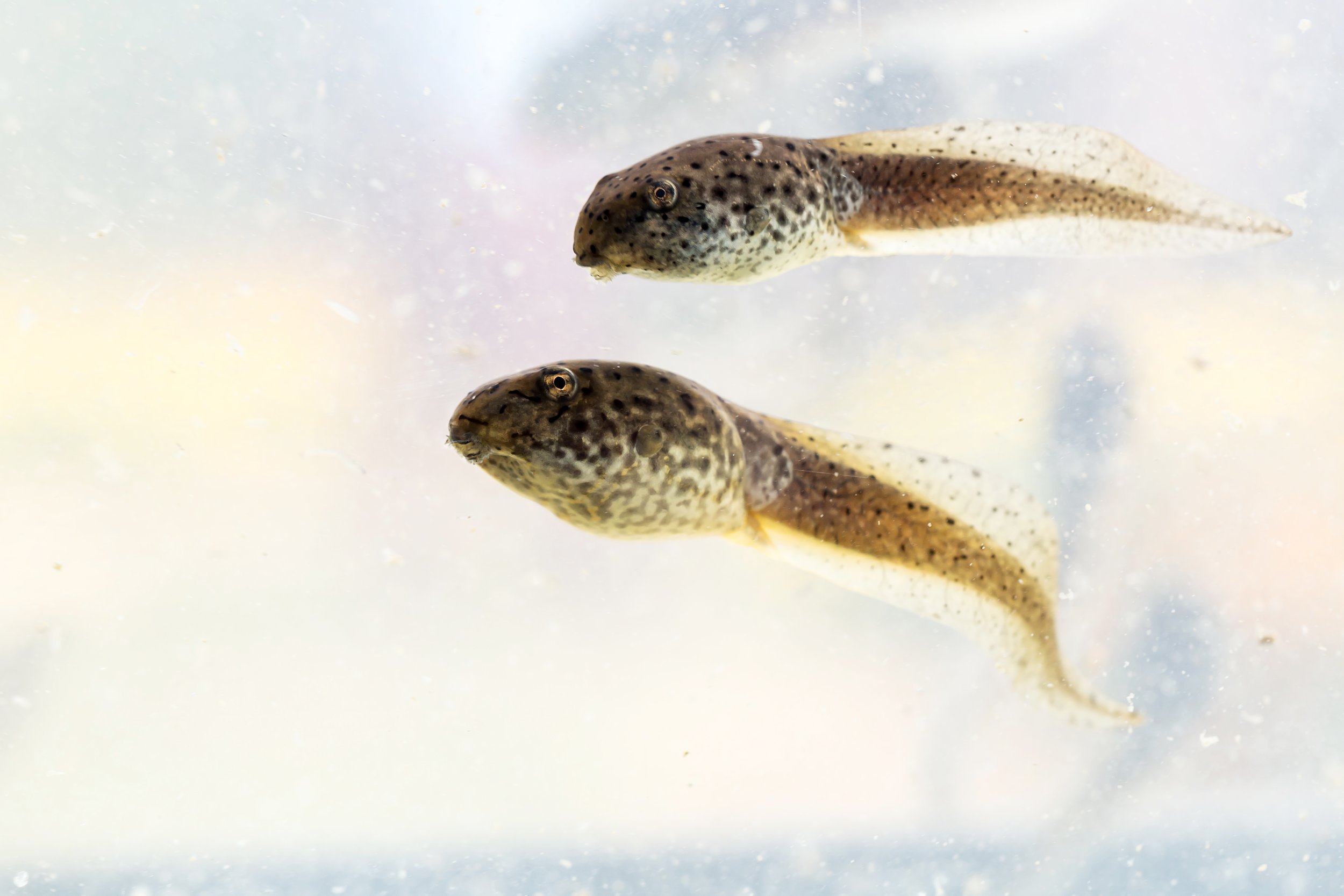Bullfrog
Rana catesbeiana
As far as frogs go, bullfrogs are probably one of the most well-known species in the United States. Bull frogs are large with different shades of green to dark green with black blotches and a marbled pattern under the chin. Their large googly eyes sit on top of their heads allowing for a wide range of vision. Bull frogs are the largest frog species found in North America, reaching about 8" and can weigh over a pound. Amphibians are ectotherms meaning they are cold blooded. Frogs can absorb oxygen through their skin directly into their blood vessels. This is where that slimy mucous comes in handy to keep the frogs skin wet allowing for appropriate oxygen transfer. For this reason we use nitrile gloves during treatments and exams to reduce damage to their protective coating and to avoid transfer of harmful chemicals from our skin or latex gloves.
Photo by Charles Titterington
Sexual dimorphism
Once bull frogs reach adult size you may wonder how you tell the difference between males and females. Females grow to be larger then males with the average female being 6 to 8 inches. The other male/female identifying factor is the tympanic membrane size. The tympanic membrane is the large round disk located behind the eye also known as an eardrum, this also protects the frogs inner ear. The males tympanic membrane is larger then their eyes while females tympanic membrane is the same size or slightly smaller then the eyes.
Male
Photo by Nicolas McCarney
Female
Photo by Charles Titterington
Photo by Jim Peters
Bullfrog calls
Males make their calls inviting the females in to their selected aquatic oasis, once a female has picked her guy she enters his territory where amplexus begins. Amplexus is the mating position frogs use where the male holds on to the females back with a hug like hold. She will then pass between 12,000 and 20,000 eggs that will be fertilized externally by the male as she releases her eggs into the shallow water
Habitat
Bullfrogs can be found throughout Florida near freshwater ponds, lakes and slow moving streams. They prefer areas with aquatic vegetation and cover.
Photo by Daniel D. Dye II
What's on the menu!
If it fits, it ships! Bullfrogs eat a variety of foods, including crayfish, water beetles, lizards, snakes, other frogs, insects, occasionally small birds, etc.
Breeding Season
February through October with a peak in the summer.
Tadpole facts
Frogs go through metamorphosis, this is a process of transformation from a immature form to an adult in 2 or more distinct stages.
Bull frog tadpoles mainly feed on algae and aquatic plants and invertebrates.
At the aquatic larval stage a bull frog tadpole can reach 4- 6 inches!
Bull frog tadpoles can remain in the larval stage for 1 to 3 years before transforming into a froglet
Photo by Conrad Wernett
Stock Photo
Disease concerns- Below are a two of the more common concerns for diseases that can cause mass mortality in amphibians and not specifically linked to any one species.
Chytridiomycosis also know as chytrid fungus cause skin thickening, interfering with natural oxygen exchange. Anorexia, lethargy, red skin, convulsions, lack of the righting reflex are symptoms to watch for. Its been found that bull frogs are not affected by this disease like other frog species are and have an immunity. Chytridiomycosis is easily spread by human activity. Boots, clothes, and equipment should be cleaned. Wild amphibians should not be moved between habitats.
Ranavirus- Causes two forms of disease in frogs: skin ulcers and internal bleeding.The clearest indications that a frog population is suffering from ranaviral disease are mass mortalities of adults in or around the pond in summer. Although other factors should be considered for example pollution or toxins. Testing would be needed. Wild amphibians should not be moved between habitats.
If you see any suspicious illness or die offs in Florida please report to the FWC. 800-636-0511








